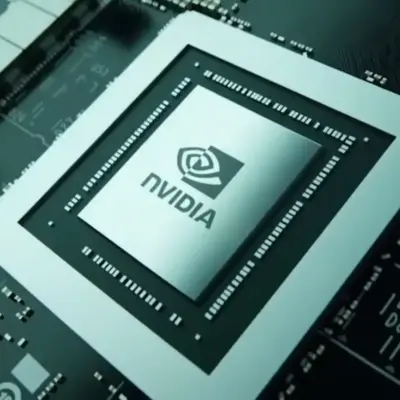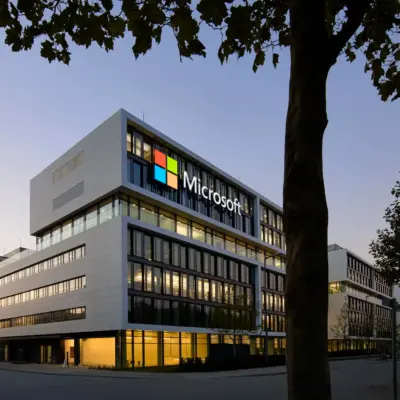In the realm of a rapidly changing world, technology stands at the forefront, driving this transformative process. Each year, new innovations and breakthroughs shape our digital landscape, presenting both opportunities and challenges for businesses and consumers alike. As a futurist, my focus is on identifying the key technologies gaining traction, leading me to present the “Top 8 Tech Trends in 2023” in this blog post. These trends are set to significantly impact our lives, work, and society in the coming year.
1. AI Everywhere
Artificial intelligence (AI) is not a new trend, but it will become even more pervasive and powerful in 2023. AI will be embedded in every aspect of our lives, from the products and services we use to the business processes we rely on, to the decisions we make.
One of the key drivers of AI adoption in 2023 will be no-code AI, which will enable anyone to leverage the power of AI without writing a single line of code. No-code AI platforms will provide easy drag-and-drop interfaces that allow users to create, train, and deploy AI models for various purposes, such as personalization, recommendation, prediction, classification, and more.
AI will also be the engine behind many of the emerging trends in the retail market, such as contactless, autonomous shopping, and delivery. AI will make it easier for consumers to pay for and receive goods and services without human intervention. For example, Stitch Fix uses AI-enabled algorithms to recommend clothes to its customers that match their sizes and tastes. AI will also augment nearly every job in every industry, helping workers to perform tasks faster, better, and safer.
2. Parts of the Metaverse Will Become Real
The metaverse is a term that describes a more immersive and persistent internet where we can work, play, and socialize on a shared platform. The metaverse is not a single technology, but a convergence of several technologies, such as augmented reality (AR), virtual reality (VR), cloud computing, blockchain, and 5G.
In 2023, we will see parts of the metaverse become real, as more platforms and applications emerge that offer immersive experiences that blur the boundaries between the physical and digital worlds. For example, Facebook recently announced its vision to become a metaverse company that enables people to connect across devices and platforms. Microsoft also unveiled its Mesh platform that allows users to collaborate in mixed-reality environments.
The metaverse will create new opportunities for entertainment, education, commerce, socialization, and creativity. It will also pose new challenges for privacy, security, regulation, and ethics.
3. Quantum Computing Breaks Through
Another trend that has been around for a long is quantum computing, which will advance significantly in 2023. A type of computing known as quantum computing takes advantage of quantum physics to carry out tasks that are either unfeasible or impossible for conventional computers. A number of the most challenging issues in science, engineering, health, cryptography, and other fields may one day be resolved by quantum computers.
In 2023, we will see a quantum computing breakthrough from being a physics problem to an engineering one. Several companies and organizations are working on developing quantum hardware and software that can achieve a quantum advantage or supremacy over classical computers. For example,
- Google claimed to have achieved quantum supremacy in 2019 by performing a calculation in 200 seconds that would take a supercomputer 10,000 years.
- IBM announced its roadmap to build a 1,000-qubit quantum computer by 2023.
- Amazon launched its Bracket service that allows customers to access quantum computing resources from different providers.
- Microsoft released its Quantum Development Kit that enables developers to create quantum applications using its Q# language.
Quantum computing will open up new possibilities for innovation and discovery across various domains. It will also create new threats to cybersecurity and encryption.
4. Cybersecurity Becomes More Critical
As technology becomes more ubiquitous and interconnected, cybersecurity becomes more critical than ever. Cyberattacks are becoming more frequent, sophisticated,
and damaging than ever before. According to Cybersecurity Ventures,
- Cybercrime will cost the world $10.5 trillion annually by 2025.
- Ransomware attacks will occur every 11 seconds in 2021.
- The global cybersecurity workforce shortage will reach 3.5 million by 2021.
Related Content: Big Data Analytics and Its Impact in 2023
In 2023, we will see cybersecurity become more proactive, adaptive, and resilient.
- Cybersecurity solutions will leverage AI, machine learning, and automation to detect, prevent, and respond to cyber threats in real-time.
- Cybersecurity solutions will also use blockchain, zero trust, and digital immune system approaches to protect data and systems from unauthorized access and tampering.
- Cybersecurity will also become more collaborative and cooperative, as organizations and governments share information and resources to combat cyber threats.
5. Robotic Process Automation (RPA) Takes Off
Robotic process automation (RPA) is a technology that uses software robots or digital workers to automate repetitive, rule-based, and high-volume tasks that are normally performed by humans. RPA can improve the efficiency, accuracy, and scalability of business processes while reducing costs and errors.
RPA can also free up human workers to focus on more creative, strategic, and value-added tasks.
In 2023, RPA will take off as more organizations adopt it to streamline and optimize their operations.
According to Gartner,
- The global RPA market will grow by 19.5% annually from 2020 to 2024.
- By 2024, 45% of all repetitive work tasks will be automated, saving $5 billion in labor costs.
- By 2025, RPA will have evolved from automating simple tasks to automating complex processes that involve multiple systems, data sources, and human interactions.
RPA will also become more intelligent and autonomous, as it integrates with AI, machine learning, natural language processing, computer vision, and other technologies. RPA will also become more accessible and user-friendly, as no-code and low-code platforms enable anyone to create and deploy RPA bots without coding skills.
6. Cloud Computing Becomes the Norm
Another well-established trend that will prevail in 2023 is cloud computing. A concept for providing computer services over the internet, including servers, storage, databases, networking, software, analytics, and more, is known as cloud computing. Scalability, flexibility, cost-effectiveness, dependability, security, and creativity are just a few advantages of cloud computing.
In 2023, cloud computing will become the default mode of IT delivery for most organizations. According to IDC,
- The global cloud market will reach $832 billion by 2025, growing at a compound annual growth rate (CAGR) of 15.7% from 2020 to 2025.
- By 2022, over 90% of enterprises worldwide will rely on a mix of on-premises/dedicated private clouds, multiple public clouds, and legacy platforms to meet their infrastructure needs.
- By 2023, over 50% of all IT spending will be on cloud-based technologies.
Cloud computing will also become more diverse and specialized, as different types of clouds emerge to cater to different needs and preferences. For example,
- Industry cloud platforms will offer cloud services tailored to specific industries, such as healthcare, finance, education, and manufacturing.
- Edge cloud computing will bring cloud capabilities closer to the source of data and users, enabling faster processing and lower latency.
- Green cloud computing will focus on reducing the environmental impact of cloud operations by using renewable energy sources and optimizing resource utilization.
7. Blockchain Technology Goes Mainstream
Blockchain technology, as a method of data storage and transfer, utilizes a shared and synchronized distributed ledger among multiple participants. Moreover, without the need for middlemen or centralized agencies, it facilitates secure, transparent, and decentralized transactions.
Blockchain technology has many applications beyond cryptocurrencies, such as supply chain management, digital identity, smart contracts, voting systems, and more.
In 2023, blockchain technology will go mainstream as more organizations adopt it to improve their efficiency, trust, and innovation.
According to PwC,
- The global blockchain market will reach $1.76 trillion by 2030, growing at a CAGR of 29.7% from 2020 to 2030.
- By 2025, 10% of the global GDP will be stored on blockchain platforms.
- By 2030, 40% of enterprises will use blockchain as part of their core business operations.
Blockchain technology will also become more interoperable and scalable, as different blockchain platforms and protocols work together to enable cross-chain communication and transactions. Blockchain technology will also become more user-friendly and accessible, as no-code and low-code platforms enable anyone to create and deploy blockchain applications without coding skills.
8. Internet of Things (IoT) Connects Everything
The Internet of Things (IoT) is a network of physical objects that are embedded with sensors, actuators, and communication devices that enable them to collect, process, and exchange data over the Internet. IoT devices can range from smart home appliances, wearables, vehicles, and industrial machines, to smart cities, farms, and healthcare systems.
In 2023, IoT will connect everything, creating a massive amount of data and value for businesses and consumers alike. According to Statista,
- The global IoT market will reach $1.6 trillion by 2025, growing at a CAGR of 24.9% from 2019 to 2025.
- The number of IoT devices worldwide will reach 75.





